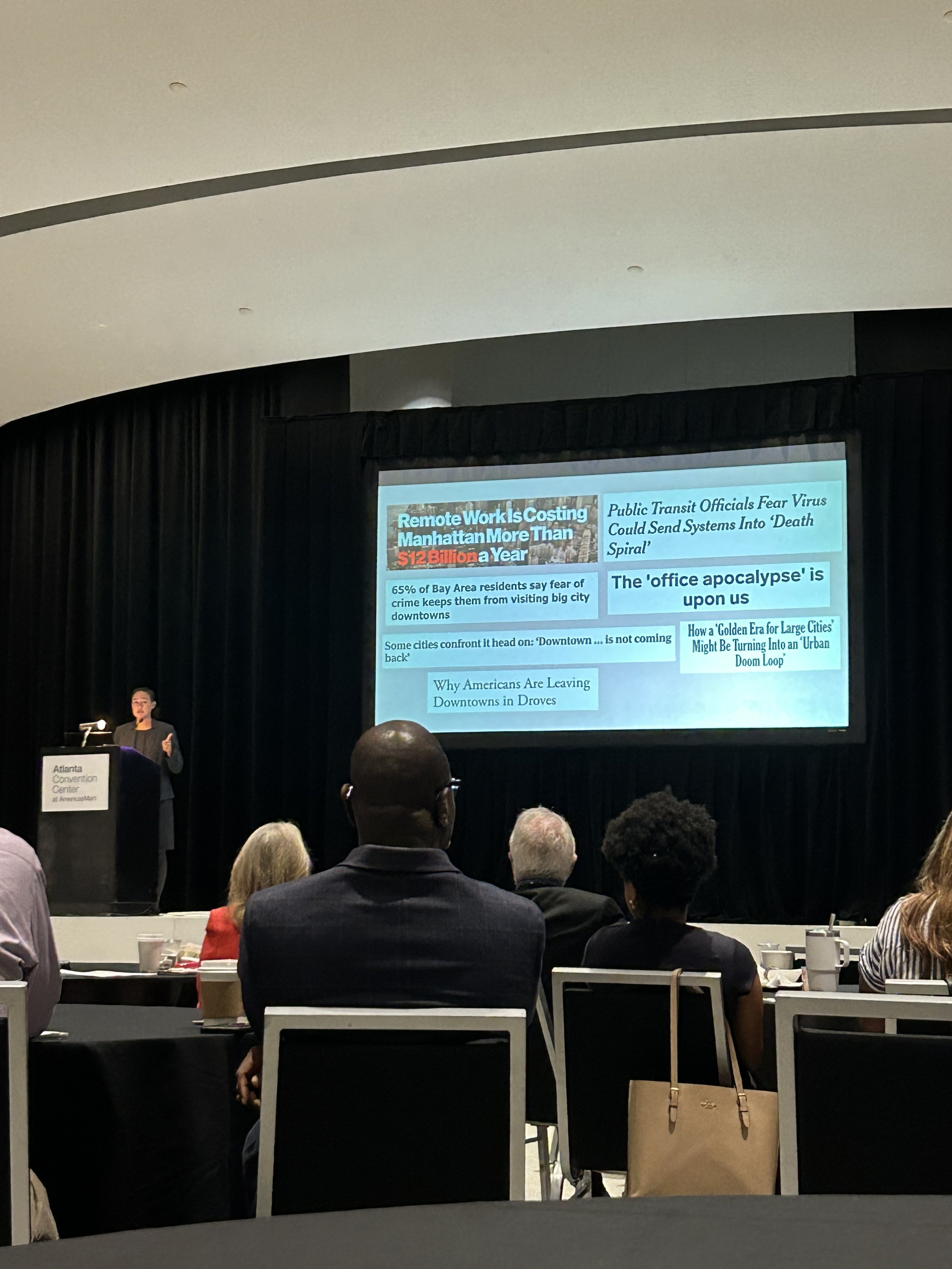Who is Downtown For?
Earlier this morning, DLBP attended a special presentation hosted by Central Atlanta Progress featuring urban planning expert Tracy Hadden Loh, a Fellow with the Anne T. and Robert M. Bass Center for Transformative Placemaking at Brookings Metro.
In her presentation, Tracy discussed how the COVID pandemic, economic uncertainty, issues of racial justice, and climate change are impacting downtowns and offered strategies that can be used to mitigate these effects. She also referenced the “Doom Loop” which is caused by people moving away from downtown, which leads to disinvestment, decreased revenues, and cuts to services. This, in turn, causes a reduction in the overall quality of downtown, which feeds back on itself creating less demand.
So what are five things we get wrong with downtowns, and how does Tracy posit to fix them?
1. Both the perception and reality of crime. Some areas may have high crime rates, while others may not. Places that feel unsafe can be improved through placemaking, investment, and urban design. For downtowns with high crime rates, a mix of placemaking, upkeep of the urban realm, and better trained and trusted law enforcement is essential.
2. Myths about converting offices to housing. Tracy and her team’s research indicates that the issue is not too many offices, but too little of everything else. Office conversions are an expensive way to contribute a fraction of what is actually needed. Instead, downtowns should focus on becoming great mixed-use districts that attract office users.
3. The future of transit. While it’s easy to be discouraged by falling ridership, well-connected transit is vital for downtowns and surrounding regions. We should focus on growing non-commute trips and bringing activity to downtown that is not just for office uses.
4. The issue of homelessness. While homelessness concentrates in downtown, it is caused by issues at the regional level, such as the cost of housing and lack of supportive policies. A cohesive continuum of care is necessary for creating more support for people experiencing homelessness.
5. Defining “recovery” – who is downtown for? Recent studies into the recovery of downtowns focuses on unique trips and doesn’t always capture day-to-day activity. Cities need to think about the various users of downtown areas and measure recovery across different sectors.
These myths – and Tracy’s strategies for confronting them – can help us create vibrant, mixed use, mixed-income communities at the core of our cities. Our team enjoyed hearing about Tracy’s research and proposed solutions to these challenges. DLBP is passionate about partnering with other stakeholders in the community to create better places, and we look forward to seeing Downtown Atlanta thrive.

